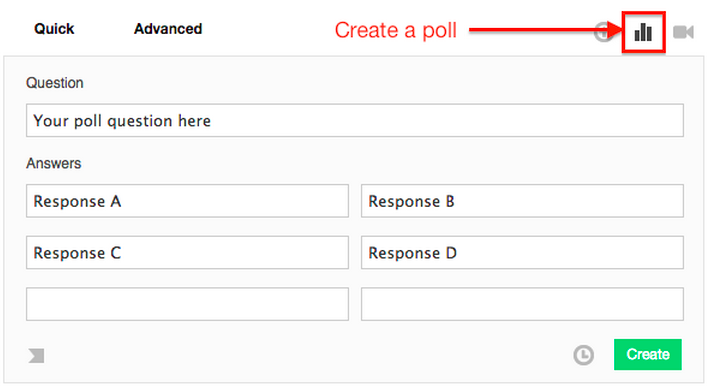Pop-up advertisements might just be the least effective digital marketing strategy. People are more likely to summit Mount Everest than click on an advertisement. Trailing closely behind the dreaded pop-up ads are those lengthy forms that appear as soon as you click ‘download.’ This data collection strategy, which requests that visitors fill out (an often lengthy) form before reaching the content they were looking for, is a great way to increase your site’s bounce rate and fracture your relationship with the audience.
Landing pages are designed to collect information from your site’s visitors so they can eventually be converted into a customer. However, users are reluctant to both spend time on forms and release their information to a company or brand before a relationship is established.
So if the form isn’t ideal, how can marketers collect robust data on their audience and nurture prospective leads? Without long forms marketers don’t have many options to collect information from their site’s visitors. Audiences need to trust you before they release information to you, and asking for details up-front can be off-putting and ultimately damage your relationship with the prospective lead.
How do companies and brands learn about their audience without jeopardizing their relationship with the potential prospect? Just like any relationship, developing a repertoire with your audience over time is the best way to engage them and obtain information. The best solution to this predicament is to embrace Progressive Profiling.
What is Progressive Profiling?
Progressive profiling is an increasingly popular marketing technique that asks for information incrementally over time. Instead of forcing prospects to fill out lengthy forms on their first visit, progressive profiling qualifies leads by asking users to answer only a few questions with each visit to the site. Typically, the most important questions are asked on the first visit such as a visitor’s first name, last name, email, and phone number. Each time a visitor returns to the site, requests to download a piece of content, or registers for an event, forms appear to collect new data. The questions become more detailed depending on how many visits a visitor has made and how far along they are in the purchasing process. On subsequent visits the questions become more focused and seek to learn an individual’s job/role, industry, location, and current purchase plans.
This form of profiling mirrors trends in the shifting marketing landscape. Consumers no longer tolerate intrusive ads, and lengthy forms often fall into this category. Instead of inundating your audience with questions, it is more beneficial to start a conversation – earning their trust first and asking for information incrementally over time. According to Dan Zarrella of HubSpot, conversion rates improve by almost half when the number of form fields are reduced from four to three fields. Asking 3, 4, or 5 questions at a time can help minimize your site’s bounce rate and create a robust profile of your potential leads over time.
Rock Content’s Approach To Progressive Profiling
What other companies achieve with forms, Rock Content accomplishes with organic interaction. No audience wants to be talked at. They want to be talked with. Rock Content doesn’t want your potential customers to be deterred by endless forms. Instead of using the traditional progressive profiling technique, the Rock Content platform gathers information organically through polls, fill-in-the-blank fields, and questionnaires sprinkled throughout a website’s content. This makes gathering information feel less like a hurdle that must be jumped to get to the desired content, and more like a choice, or ideally, a conversation.
The information is obtained primarily through polls and open-ended questions, which gather data over time to build robust progressive profiles of each visitor to your site. Each form of data collection has different advantages depending on your goal.
Produce Polls
Polls can be a useful tool for gauging audience reaction and obtaining feedback on an event or campaign. Poll questions are great for gathering structured data to flesh out your audience profile, and can be used to inform your lead nurturing programs and marketing automation.
Create Questions
Questions can be inserted into a stream alongside content and can consist of just one or multiple fields. This is a great opportunity to ask your audience open-ended questions for a more personalized approach. Polls help gather structured data, but open-ended questions give your audience a platform to speak directly with you and communicate their preferences, concerns, and ideas. This strategy also allows you to tie your business goals to your content, allowing you to create content that will draw more information from your audience.
Progressive Profiles
Rock Content doesn’t just wait for the audience member to offer you information. They also track every interaction a visitor has with your content, building a Progressive Profile over time. As you learn more about an individual through subsequent interactions with your content, the Scribble platform builds a profile, creating a resource of rich data that can be used to turn your site’s visitors into prospects.
Rock Content’s Progressive Profile features a Profile Completion Scale so you can track what percentage of the Profiling Questions a site visitor has filled out. The profile page also includes all of the client’s answers to polling and open-ended questions, and tracks all other interactions they’ve had with your site’s content.
These tools not only give you insight into who is looking at your content and how to reach them, but will also help optimize future content engagement initiatives. Using subtle progressive profiling will amplify your lead-generation practices without jeopardizing your relationship with the audience.
The goal of progressive profiling, especially when using the Rock Content platform, is to make marketing subtle, easy on the audience, and to nurture a relationship with the audience because, as Pamela Vaughan of HubSpot notes, “it’s about creating lovable marketing after all, right?”







